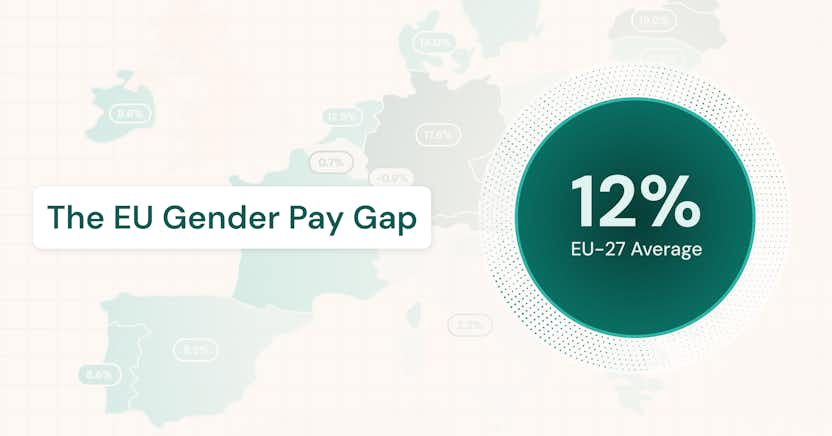Mastering Compensation Management in a Global Workforce

Learn more about the following beqom products
In today’s interconnected world, where multinational workforces are the norm, compensation management has become a strategic lever for global HR leaders. Done right, global compensation drives retention, supports pay equity, and enables strategic growth. It empowers HR leaders to compete for talent in local markets while maintaining cohesion at a global level.
But the complexities of managing compensation for a global workforce can keep Compensation & Benefits teams up at night. In this blog, we’ll explore what makes global compensation management so challenging, and how the right tools and approach can turn it from an operational burden into a strategic asset.
What makes global compensation management so complex?
Managing compensation across countries is far more than just converting currencies. HR and Compensation leaders must juggle a variety of evolving factors that make standardization difficult, including:
- Local regulations and compliance requirements, which vary significantly from one country to another.
- Different talent needs in different regions, driven by local go-to-market strategies or business models that require varying skill sets and organizational structures.
- Labor market dynamics, including supply and demand for talent, compensation benchmarks, and cost of talent, which differ widely across countries and regions.
- Currency fluctuations and differences in cost of living that impact pay fairness and competitiveness.
- Cultural expectations and norms, which shape how compensation is perceived and valued.
- Benefit offerings and taxation structures, which influence total rewards packages.
- Data privacy laws, which affect how employee compensation data can be handled and stored.
- The “multi” factor: multiple currencies, languages, entities, time zones, and reward cultures—all of which amplify the complexity of compensation processes.
These variables create a moving target for global rewards teams. As companies scale, spreadsheets and disconnected systems often fall short. The result? Inconsistencies, compliance risks, and lost opportunities to leverage compensation as a competitive advantage.
How do leading organizations approach global compensation?
To manage global compensation effectively, high-performing HR teams adopt a unified but flexible approach. This means developing a global compensation philosophy that sets the foundation, and then adapting it to local contexts.
Here’s what that looks like in practice:
- Global compensation framework: set core principles that apply to all geographies—such as pay for performance, internal equity, or market competitiveness—while allowing localized implementation.
- Localized benchmarks: use market data to understand local pay ranges, cost of living adjustments, and currency trends to maintain fairness and competitiveness.
- Compensation aligned to talent strategy: design compensation programs that reflect the unique roles, skills, and hiring challenges in each market, ensuring alignment with local talent needs and business goals.
- Standardized processes: create consistent processes for salary planning, merit increases, bonuses, and promotions to ensure governance and equity across regions.
- Centralized oversight with local autonomy: provide local HR teams the flexibility to make market-relevant decisions—such as adapting bonus structures or merit guidelines to meet regional laws—while maintaining global visibility and control.
- Technology integration: use a platform that can centralize data, support multi-currency and multi-language environments, and enforce policy adherence.
By aligning local practices with a global strategy, organizations reduce compliance risks, increase transparency, and ensure equitable outcomes across their workforce.
What challenges do HR teams face when managing global pay?
Despite their best efforts, HR and Compensation teams often run into some common roadblocks when managing international compensation:
- Lack of real-time visibility into pay data across geographies.
- Inconsistent data sources, leading to errors in salary planning and analysis.
- Manual and disconnected systems that slow down compensation cycles.
- Difficulty ensuring pay equity across countries, roles, and functions.
- Regulatory changes that are hard to track and enforce globally.
- Difficulty optimizing compensation budgets across regions, including the need to model multiple scenarios for merit increases, bonus pool distributions, or other incentives—often without the tools to run real-time simulations or forecast impacts accurately.
- Coordinating extended, multi-step processes across global teams—such as target setting, approvals, and evaluations—while meeting tight deadlines and navigating time zones, languages, and communication gaps.
- Operational complexity in managing multiple compensation programs, such as administering various bonus plans across regions, functions, or job levels—all with different eligibility rules, performance metrics, and payout timelines.
These issues aren’t just operational—they’re strategic. Delays in compensation planning can impact retention. Lack of transparency can hinder trust. And non-compliance can lead to costly legal exposure.
That’s why more organizations are prioritizing a robust digital infrastructure for compensation management—one that can flex with evolving needs and enable strategic decision-making at scale.
What features should a global compensation management system have?
If your organization is managing pay across borders, the right technology isn’t optional—it’s essential. A modern compensation management platform should enable you to:
- Support multi-currency and localized pay practices, with automatic currency conversion and inflation adjustments.
- Enforce global governance and compliance, with audit trails, approval workflows, and configurable business rules.
- Analyze pay equity and performance data across countries and business units with real-time insights.
- Configure and manage multiple compensation programs, such as region-specific bonus plans or function-specific incentive schemes, each with their own logic, eligibility, and performance metrics.
- Do planning, budgeting, simulations, and accruals, enabling HR and Finance to run what-if scenarios for merit increases, bonus pools, or compensation distributions by country, business unit, or employee group–as well as to generate accruals for Finance.
- Integrate with HCM, payroll, and financial systems, creating a single source of truth for compensation data.
- Deliver a seamless user experience, whether for HR leaders in HQ or managers across remote locations.
In short, your compensation tech stack should help you operationalize your global strategy, not stand in its way.
How can compensation strategies support global talent goals?
Compensation doesn’t just reward employees—it communicates your values as an employer. A well-executed global comp strategy supports broader HR goals such as:
- Attracting top talent in diverse, competitive markets.
- Enhancing retention by rewarding high performers in locally meaningful ways.
- Driving engagement and motivation with transparent, consistent rewards.
- Ensuring internal mobility by aligning compensation across roles and regions.
- Promoting fairness and inclusion, through data-driven practices and transparency.
As your workforce becomes more distributed, compensation becomes a critical lever to build a unified culture while respecting local realities.
The path forward: Why a global-ready platform is essential
Global compensation isn’t just a challenge—it’s an opportunity to create alignment, boost performance, and show employees they’re valued, no matter where they work. But it requires a strategy built on agility, insight, and control.
That’s why leading organizations turn to compensation platforms purpose-built for global scale.
beqom empowers enterprises to manage compensation across borders with confidence. From complex salary structures to performance-driven bonuses and equity programs, our platform enables you to align rewards with strategy—while navigating the complexity of global regulations, currencies, and cultures.
Ready to simplify global compensation and drive business results? Book a demo with beqom today.







